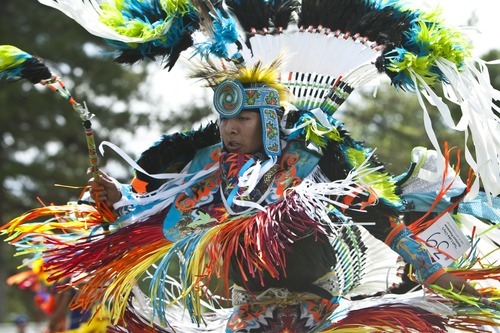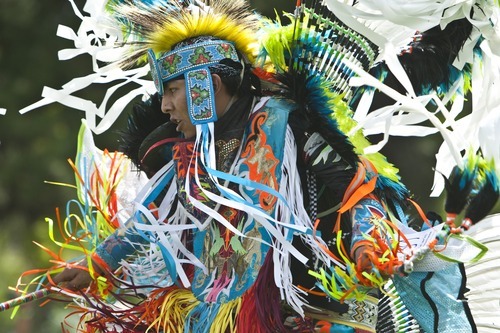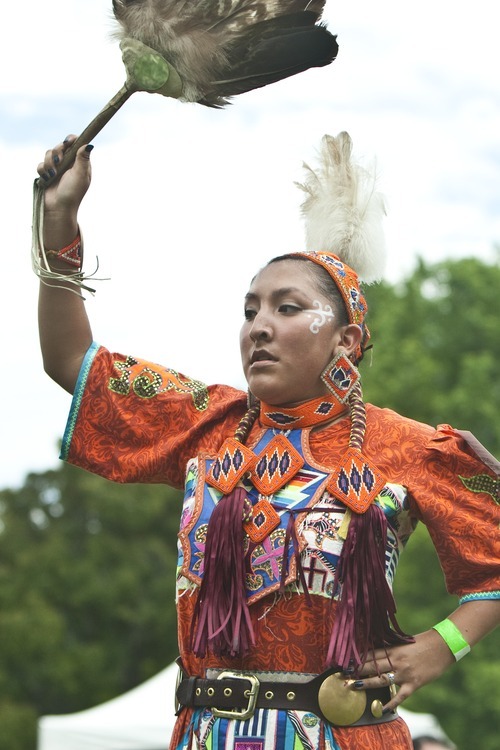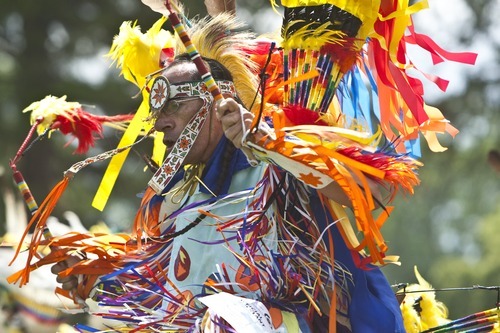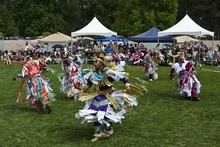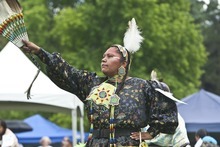This is an archived article that was published on sltrib.com in 2011, and information in the article may be outdated. It is provided only for personal research purposes and may not be reprinted.
When Christina Kilbane heard drums pounding near her home a block from Liberty Park on Monday, she decided to investigate.
What she discovered were dozens of American Indian dancers in full regalia performing a variety of dances to chants, singing and drum beats — all a part of the 17th annual Native American Celebration in the Park.
"This is a lot more interesting than Pioneer Day," said Kilbane. "I am attracted to different cultures and it's nice to experience different cultures besides our own."
There is an interesting synergy between this event and the Days of '47 Parade that ends at Liberty Park not far from where the annual powwow takes place. The two events, as well as the evening fireworks, seem to feed on each other, drawing as many as 85,000 people to Liberty Park in some years.
The cultural celebration includes not only an area for traditional dances, but vendor booths selling everything from American Indian jewelry to pizza to traditional Navajo fry bread and tacos. There was even a game area for kids that included karaoke.
Yolanda Francisco-Nez, one of the event's organizers, said it offers American Indians a chance to extend their hands in friendship to different cultures.
"It works," she said of coordinating the cultural event with the Pioneer Day activities. "We all know our roles. We know exactly what we are doing in this place. We know where their event ends and ours begins. So we are sync with each other."
Shirl Snyder of West Jordan, a Navajo, said her dance group tours year-round throughout the United States and Canada. She and her family drove in from Pyramid Lake, Nev., which held a big powwow over the weekend.
"This is small compared to a lot of the ones we go to," said Snyder as she prepared her daughter Shelby to perform the fancy shawl dance.
Snyder seemed proud of the fact that her ancestors lived in Utah long before the Mormon pioneers settled here in 1847.
"Our relatives were here before anyone," she said.
Jerry Bear, a member of the Tooele County Goshute tribe, helped organize much of the dance competition. He said he expected 15 to 20 tribes to participate. They came from Colorado, Idaho, Arizona, New Mexico, California and Utah to perform.
He traced events bringing Anglos and American Indians together back to the late 1800s when Buffalo Bill Cody's Wild West Show introduced the dances to the masses.
"We have a lot of non-natives here," he said. "It's fun to celebrate and enjoy dance and the different cultures and tribes. It is good to know other people's heritage."
Elizabeth Nakai, a 16-year-old Navajo dancer from Cedar City, said she would perform the jingle, blossom and healing dances.
"When you dance, you try to think of the people you helped," she said about the motivation behind the healing dance.
Lorenzo Elwood came from New Mexico to participate. As someone who performs the grass dance, his group was one of the first out because it's his job to go in and prepare the grassy area for all the other dancers.
"They judge us on the way we dance and our regalia," he said.
Margie Torres of Salt Lake City, who is part Apache, said she loved the culture, costumes and music.
"Who is more pioneer than us people?" she asked.
Twitter: @tribtomwharton


